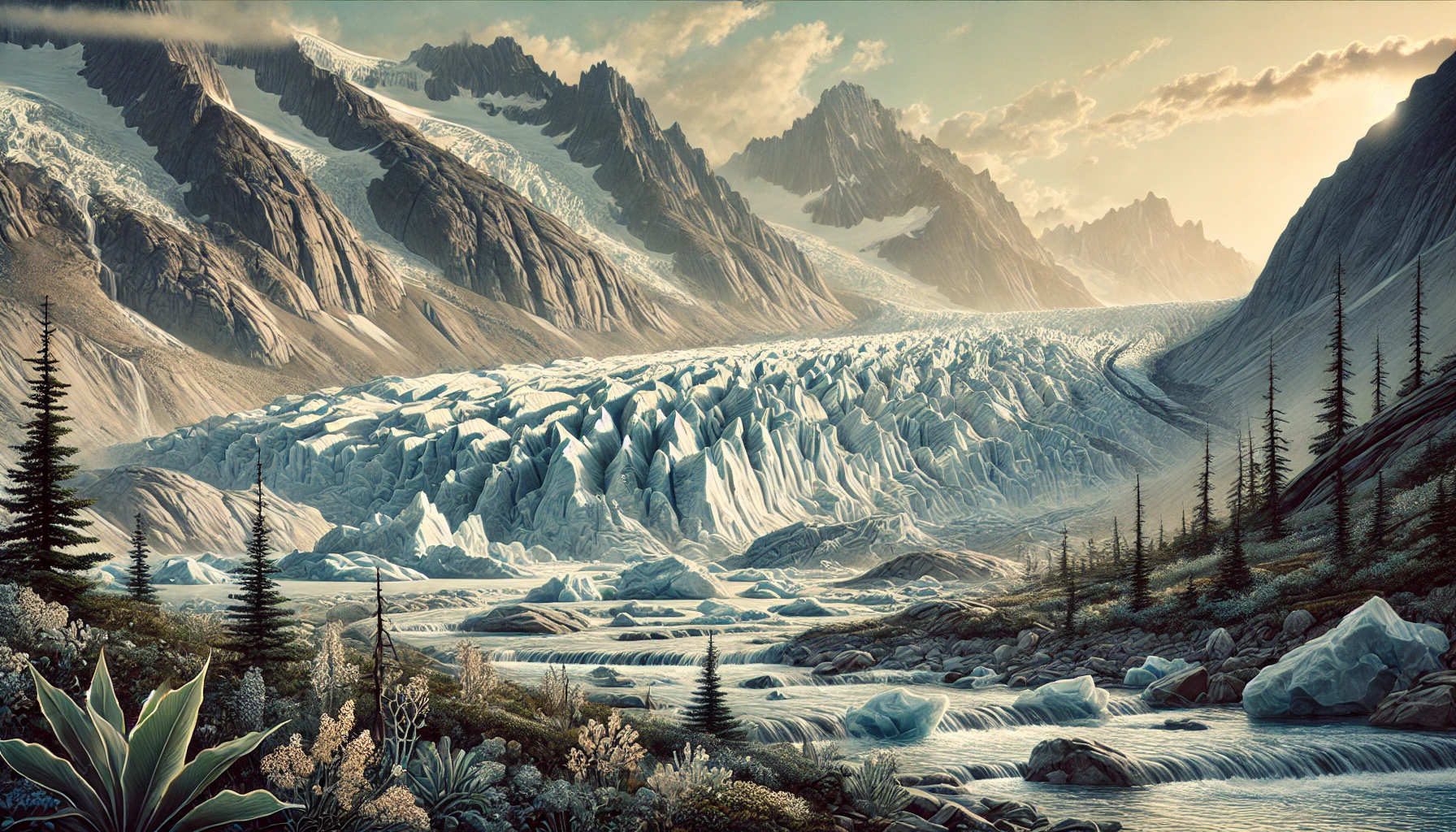
There is a sound the ice makes when it moves. Those who have listened closely will tell you it is not merely cracking, not merely groaning. It is the earth speaking, breathing, remembering.
In the high mountains of northwest North America, this voice has been part of the landscape for millennia, shaping rivers, carving valleys, and holding stories that began long before any of us arrived. But now, the cryosphere—the glaciers and permafrost that once stood as sentinels of our planet’s cold heart—is slipping away. And with it, something essential is being lost.
In the unfolding narrative of our understanding, it was Dan Shugar and John Clague who, several years past, took it upon themselves to illuminate this matter in a paper, casting forth ideas that beckon us to look deeper into the fabric of our reality.
Likely, you didn't read it, almost no one did. No one ever does.
For Shugar and Clague, the severity and repercussions of climate change manifest with striking intensity in the frigid realms of high latitudes and the towering heights of our mountains. Here, the relentless thawing of glaciers, ice sheets, sea ice, and permafrost speaks to a truth that is both urgent and undeniable—a profound reminder of our connection to the earth and the dire consequences of our neglect.
In their own words, "About one-quarter of the rise in global sea level caused by the global shrinkage of glaciers over the past half century is believed to have come from glaciers bordering the Gulf of Alaska.
There is no poetry or romance in their caution. Just ruin. "The deglaciation of Glacier Bay in Southeast Alaska, which began in the late 18th century, involved the loss of several thousand cubic kilometres of glacier ice resulting in the highest uplift rates on Earth."
There looms a far greater tragedy, one that stretches back to the end of the Pleistocene Epoch—a vast expanse of time, spanning from 2.58 million years ago to a mere 11,700 years past, a period that we, in our fleeting moments of understanding, have come to label the Ice Age, in the shadow of our own losses.
And those losses they say, "are expected to continue and perhaps accelerate through the remainder of this century."
Rage, rage as the ice retreats
The retreat of the ice is not quiet. It is a scream we choose not to hear, an unrelenting warning we have learned to ignore. As glaciers melt, their waters flood valleys, overwhelm rivers, and alter ecosystems that have lived in delicate balance for centuries. Streams that once carried the lifeblood of salmon are now swollen in spring and dry in summer, leaving fish stranded and their predators hungry. The water cycle itself is unmoored, its rhythm fractured by a warming climate we refuse to confront.
But it is not just the rivers and forests that grieve. For the people who have lived in harmony with these mountains—the First Nations and Indigenous communities—this is a spiritual loss as much as an ecological one. The glaciers are more than ice; they are ancestors, teachers, guardians. To watch them disappear is to feel the weight of a profound disconnection, a rupture in the bond between people and place.
And then there is the question of what lies beneath. The permafrost, frozen for centuries, is thawing, releasing carbon and methane long locked away. This is not a distant concern; it is a release that accelerates the very warming that caused it, a vicious cycle that spirals toward a future none of us are prepared to face.
To those who care about the environment, I say this: We cannot afford to mourn in silence. Loss on this scale demands action, demands reckoning. The ice has no choice but to melt, but we have choices—choices about how we live, how we consume, how we fight for a world that still holds the memory of what it once was.
It is easy to feel powerless in the face of such monumental change, but powerlessness is a luxury we can no longer afford. The glaciers do not retreat in a single day; their demise is the sum of countless small acts, each one pushing them closer to the edge. And if small acts can destroy, small acts can also heal.
The cryosphere is not just ice. It is life. It is history. It is the reflection of a world that, in its wisdom, created balance from chaos. Its loss is not just a tragedy for the mountains or the rivers or the people who call them home—it is a tragedy for all of us. And the question, as always, is whether we will allow that loss to define us, or whether we will find in it the strength to fight for what remains.
The ice is still speaking, even as it fades. The question is whether we are willing to listen—and whether we are brave enough to respond.
